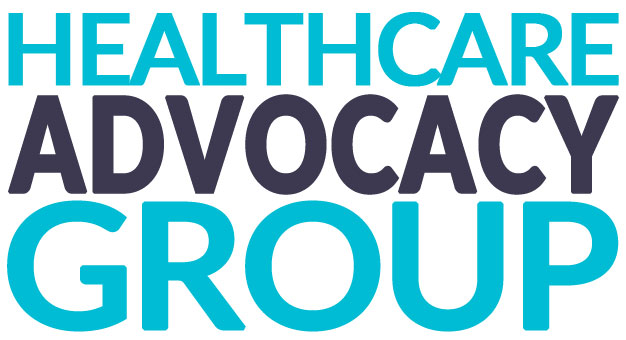LATEST TASIGNA NEWS & RECALLS
What TASIGNA Is Used For?
Tasigna, also known as nilotinib, is an oral medication from Novartis released in 2007 to treat a type of cancer called Philadelphia chromosome-positive chronic myeloid leukemia (CML).
HOW TASIGNA WORKS?
Tasigna is a drug used to treat chronic myeloid leukemia by blocking proteins that make cancer cells grow. However, growing evidence points to a connection between the use of Tasigna and atherosclerosis, a dangerous disease in which plaque builds up inside arteries.
Tasigna is part of a class of drugs called tyrosine kinase inhibitors (TKIs). Tyrosine kinases are proteins that can stimulate cancer cells like leukemia to grow. Tasigna is designed to block a certain type of protein called Bcr-Abl. Inhibiting the protein stops the leukemia cells from growing.
Read More
The recommended dosing of the Tasigna pill is twice a day at 12-hour intervals on an empty stomach. It may also be combined with other drugs.
SYMPTOMS & SIDE EFFECTS OF TASIGNA
Tasigna Side Effects & Arterial Risks
Tasigna fights leukemia by blocking certain proteins that promote the growth of new white blood cells. Originally disparaged for its astronomical $7,000 per month price, the drug now costs over $14,000 per month.
Recently, Novartis paid $390 million to settle charges from the U.S. government that they paid kickbacks to pharmacists to promote and dispense Tasigna.
There are a number of side effects linked to Tasigna, including hypertension, skin rash, nausea, muscle and joint pain, headache, fatigue, heart arrhythmia, vomiting, diarrhea and constipation.
Beginning in 2011, however, researchers discovered an increased occurrence of peripheral arterial diseases (PAD) in patients taking Tasigna. This continued with a clinical trial in 2013 noting similarly higher rates of PAD among those taking the drug.
Then, in April of 2013, Novartis, along with officials from Health Canada, warned patients and doctors that taking Tasigna may increase the risk of atherosclerosis, a thickening of the arteries and precursor to peripheral arterial disease.
Despite additional warnings from researchers about the risk of atherosclerosis and PAD from Tasigna, Novartis never notified doctors, patients or the FDA in the United States of the dangers. It is believed thousands of patients may have been affected as a result.
Lawyers are now filing lawsuits against Novartis on behalf of those who developed atherosclerosis or peripheral arterial disease after taking Tasigna, based on the company’s concealment of the dangers.
Latest TASIGNA News & Recalls
Latest news on Tasigna.
Lawsuits & Settlements
At this time there is no Tasigna class action lawsuit but families are individually filing lawsuits on behalf of victims.
Class Action Lawsuit?
No. Families have already filed lawsuits for injury or death related to Tasigna atherosclerosis. However, to date no one has organized cases into one single Tasigna class action lawsuit. Doing so would rest control of the class under the representation of one law firm, with each participant having to share in whatever award is received.
Instead, cases like this – which involve hundreds or thousands of similar injuries around the country from one product – are usually filed individually, then consolidated into one multidistrict litigation (MDL) court for more efficient handling.
MDL-type lawsuits allow you to choose who will represent you as well as what will happen with your case. And, they’ve been successful at securing multi-billion-dollar settlements for drug injuries such as Yaz blood clots and Actos bladder cancer.
Tasigna: Filing Lawsuit
Your case may be filed in your state or in a consolidated court thousands of miles away. Regardless, your attorney will attend nearly all of the necessary events on your behalf, and you will only need to attend in the rare instance that your case is selected for trial.
Lawsuits for atherosclerosis injuries related to Tasigna can range from minor hospitalization stays to death cases. Therefore, each case has a unique value based on the degree of injury. So far, no verdict or settlement has been awarded. However, lawyers expect cases to range from the high five figures to well over $1 million.
Choosing the right lawyer for your case is nearly as important as the facts of the case itself. Since these cases are fought against powerful international pharmaceutical companies with teams of lawyers, Healthcare Advocacy Group recommends choosing a law firm that specializes in drug injury litigation, with extensive experience and the resources to pursue your case to completion.
Healthcare Advocacy Group works only with lawyers and law firms that have handled thousands of defective drug and medical device lawsuits. Contact us today to speak directly with a lawyer about your case at no cost.
Risperdal Antipsychotic Medication
Victims of a drug-related injury who are contemplating pursuing a lawsuit against the manufacturer often have similar questions in deciding if it is worth their time. These include:
- How do I start a claim?
- How long does the lawsuit take?
- How much will a lawsuit cost me?
- Am I responsible for the costs if I lose?
- Will I have to travel to attend court dates?
- How much is a Tasigna lawsuit worth?
In short, the claim process is relatively easy and cost-free for the injured patient or family, and can result in significant awards, but can take a year or so to conclude. We will attempt to answer each question below.
Investigating whether you are eligible and filing a claim is easy. Healthcare Advocacy Group can connect you with a lawyer today that will discuss your case, research medical records and determine if you are eligible, then file your lawsuit, all without you having to gather records on your own.
Drug injury lawsuits can take a year or more to gather records, file claims, interview medical experts, consolidate MDL cases, negotiate settlements and/or prepare for trial. However, this is typical of most types of lawsuits.
The entire process, from your initial attorney contact to the resolution of your case, will not cost you anything unless you receive an award. In that case, attorneys’ fees of between 33% and 40% will be deducted from your award, as will the costs of investigating and filing your case. In other words, your attorney only gets paid if they win and you owe nothing if you don’t recover.
1. Quick facts about Tasigna.
Here are some useful quick facts about Tasigna:
- Pricey drug released in 2007 to treat form of leukemia called CML
- Risks of arterial disease identified in 2013 Health Canada warning
- U.S. Doctors and Patients never told of risks by Novartis
- Novartis paid $390M to DOJ for illegally promoting Tasigna
- New Lawsuits allege Novartis failed to warn patients of dangers
- Lawyers still helping those affected by Tasigna Atherosclerosis and PAD.
2. What are the Dangers of Artherosclerosis and PAD from Tasigna?
Researchers from the Mayo Clinic, University of Nebraska, University of Vienna and Health Canada have identified a link between the drug Tasigna and the arterial disease atherosclerosis.
Atherosclerosis causes the walls of the arteries to grow thicker and harder, which leads to the buildup of plaque. This causes a condition called peripheral arterial disease (PAD), which is a narrowing of the blood flow space in the arteries.
Arterial diseases like atherosclerosis can develop quickly and affect any artery of the body. Often, they cause permanent damage before they are even discovered. Risks include:
- coronary artery disease
- death of tissue resulting in amputation
- infections
- Stroke
- Death.
Health Canada has urged anyone with elevated blood sugar, heart problems, high cholesterol or high blood pressure to notify their doctor before taking Tasigna, as they may be more at risk of atherosclerosis and PAD.
The agency has also instructed doctors to monitor patients taking Tasigna for signs of atherosclerosis.
Unfortunately, these dangers were not made public to patients and doctors in the United States, the largest market for Tasigna use
3. Is there an Actemra class action lawsuit?
No. Lawsuits against Roche for Actemra side effects are being filed in various state and federal courts around the country. As the number of claims grows, these cases may eventually be consolidated into a special venue called a multidistrict litigation (MDL) court for faster handling.
While MDL lawsuits have most of the benefits of a class action lawsuit, they’re different in that plaintiffs have the ability to pick which lawyer will represent them, and have more control over the handling and settlement of their case. They also usually result in more money going to victims rather than one single class action law firm.
- atherosclerosis
- peripheral arterial disease
- coronary artery disease
- tissue death
- amputation of a limb
- infections
- stroke
- death.
If you believe you or a family member were affected, it is important to speak with a lawyer as soon as possible. It costs nothing to investigate your case or file a claim unless you receive compensation, and the time may be limited.
4. Is there a Tasigna recall?
Despite warnings from Canada’s official health agency and several independent research publications that Tasigna may increase the risk for deadly atherosclerosis and arterial diseases, there has not been a Tasigna recall.
In cases like this where several thousand people may be at risk, the FDA and manufacturer will weigh the risks and benefits, as the drug may actually help others without side effects. Also, Tasigna represents nearly $1.8 billion in yearly revenue for Novartis, so a recall is unlikely.
In fact, studies are underway aimed at actually increasing the usage of Tasigna, as a preliminary trial showed it may be beneficial to those with Parkinson’s Disease in low doses.
However, those taking the drug should remain aware that it carries risks for peripheral arterial disease and atherosclerosis.
1. Quick facts about Tasigna.
Here are some useful quick facts about Tasigna:
Read More
- Pricey drug released in 2007 to treat form of leukemia called CML
- Risks of arterial disease identified in 2013 Health Canada warning
- U.S. Doctors and Patients never told of risks by Novartis
- Novartis paid $390M to DOJ for illegally promoting Tasigna
- New Lawsuits allege Novartis failed to warn patients of dangers
- Lawyers still helping those affected by Tasigna Atherosclerosis and PAD.
2. What are the Dangers of Artherosclerosis and PAD from Tasigna?
Researchers from the Mayo Clinic, University of Nebraska, University of Vienna and Health Canada have identified a link between the drug Tasigna and the arterial disease atherosclerosis.
Atherosclerosis causes the walls of the arteries to grow thicker and harder, which leads to the buildup of plaque. This causes a condition called peripheral arterial disease (PAD), which is a narrowing of the blood flow space in the arteries.
Read More
Arterial diseases like atherosclerosis can develop quickly and affect any artery of the body. Often, they cause permanent damage before they are even discovered. Risks include:
- coronary artery disease
- death of tissue resulting in amputation
- infections
- Stroke
- Death.
Health Canada has urged anyone with elevated blood sugar, heart problems, high cholesterol or high blood pressure to notify their doctor before taking Tasigna, as they may be more at risk of atherosclerosis and PAD.
The agency has also instructed doctors to monitor patients taking Tasigna for signs of atherosclerosis.
Unfortunately, these dangers were not made public to patients and doctors in the United States, the largest market for Tasigna use
3. Is there an Actemra class action lawsuit?
No. Lawsuits against Roche for Actemra side effects are being filed in various state and federal courts around the country. As the number of claims grows, these cases may eventually be consolidated into a special venue called a multidistrict litigation (MDL) court for faster handling.
While MDL lawsuits have most of the benefits of a class action lawsuit, they’re different in that plaintiffs have the ability to pick which lawyer will represent them, and have more control over the handling and settlement of their case. They also usually result in more money going to victims rather than one single class action law firm.
Read More
Arterial diseases like atherosclerosis can develop quickly and affect any artery of the body. Often, they cause permanent damage before they are even discovered. Risks include:
- atherosclerosis
- peripheral arterial disease
- coronary artery disease
- tissue death
- amputation of a limb
- infections
- stroke
- death.
If you believe you or a family member were affected, it is important to speak with a lawyer as soon as possible. It costs nothing to investigate your case or file a claim unless you receive compensation, and the time may be limited.
4. Is there a Tasigna recall?
Despite warnings from Canada’s official health agency and several independent research publications that Tasigna may increase the risk for deadly atherosclerosis and arterial diseases, there has not been a Tasigna recall.
In cases like this where several thousand people may be at risk, the FDA and manufacturer will weigh the risks and benefits, as the drug may actually help others without side effects. Also, Tasigna represents nearly $1.8 billion in yearly revenue for Novartis, so a recall is unlikely.
Read More
In fact, studies are underway aimed at actually increasing the usage of Tasigna, as a preliminary trial showed it may be beneficial to those with Parkinson’s Disease in low doses.
However, those taking the drug should remain aware that it carries risks for peripheral arterial disease and atherosclerosis.
Legal Assistance
A possible side effect currently not on the United States warning label for Tasigna is atherosclerosis. The life-threatening disease is when plaque builds up in the arteries, causing it to harden and narrow the pathways. This limits the flow of blood throughout the body and can lead to a host of other diseases and even death.
One of the first major pieces of research linking Tasigna with atherosclerosis was published in 2011 and found some patients taking the drug experienced vascular problems. Subsequent studies concluded that Tasigna was associated with accelerated atherosclerosis.
Read More
Those risks are one of the main reasons why patients are filing Tasigna lawsuits against Novartis.
HOW TO FILE A CLAIM
Do you want to learn if you have a case? The lawsuits are being filed on behalf of those patients who suffered:
- Atherosclerosis
- Peripheral arterial diseases (PAD)
The suit claims that the drug makers failed to properly warn patients and doctors of the most severe side effects of these drugs, causing additional injuries.
Lawyers expect that thousands of patients will ultimately come forward with injuries to file claims. As is often the case with drug injury lawsuits, cases may eventually be consolidated in a central federal court for expedited handling.
A lawyer can speak with you today to determine if your case qualifies, and it costs nothing to investigate or file your claim unless you receive compensation.







